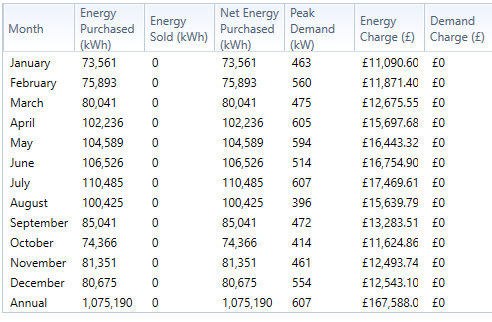BREAL
A short case study was undertaken to assess the feasibility of fuel cells on the island. Our GREL contact showed a keen interest in the evolving technology and hence we completed this case study.
|
To model the energy system of the island with fuel cells, all necessary components for electrolysis and burning hydrogen were added to the HOMER model of the islands current energy system. A 700kW AC-DC converter, 600kW electrolyser, 300 kg hydrogen tank and 250 kW fuel cell were added into the HOMER model. The size and power ratings of these components were selected based on research of fuel cell systems and judgements from the current amount of excess renewables production from the wind turbines on the island. The schematic of the HOMER model is displayed to the right. When extra electrical energy from renewable production is available after meeting the load, the electrolyser uses it to create hydrogen which is stored in the tank. The fuel cell then uses this hydrogen to create electricity during times when the renewables production cannot meet the load. The functioning of this system for an October week is shown in the graph below.
|

As evident in the graph above, the model was functioning as it should, with surplus renewables generation being used to power the electrolyser. However, the power output from the fuel cell was consistently low, rarely exceeding 50-60 kW. This low power output is due to the small round-trip efficiency from the process of converting electricity to hydrogen, then back to electricity. This is emphasised in the table to the right, which shows the total annual electrical production of each source of energy on the island. Here we can see that the fuel cell only managed to generate around 2% of the islands total electrical energy demand, despite the electrolyser using all available excess energy to create hydrogen.

The table to the right displays the information on grid sales and purchases throughout the year. As can be seen in the ‘energy sold’ column, the use of the electrolyser to create hydrogen uses up all the excess generation, meaning that no energy is sold back to the grid. As both wind farms currently generate income through ROCs and the feed-in-tariff, this would severely reduce the islands income.
To conclude, the implementation of electrolysis and fuel cells in the near future would not be economically viable for the isle currently. This is due to the processes low round trip efficiency meaning that all surplus generation would be used to provide only very little power output. Nearly all the current income of around £90,000 p.a. from selling energy back to the grid would be removed by implementing fuel cells, while the additional generation would only save the island around a few thousand pounds each year from reduced grid purchases. The potential of using a fuel cell to also provide heat would further reduce electrical demand and therefore grid purchases, but this reduction would not make-up the lost funds from removing grid exports.
It was concluded that the process could potentially be useful in the future for the island, if it was to increase its installed renewables capacity or aim towards energy autonomy. As the process requires a large amount of energy to work, then it could be usefully used to curtail large generational surpluses from the addition of more renewables. To see results for modelling of the net energy positive 2030 scenario with fuel cells click here.
To conclude, the implementation of electrolysis and fuel cells in the near future would not be economically viable for the isle currently. This is due to the processes low round trip efficiency meaning that all surplus generation would be used to provide only very little power output. Nearly all the current income of around £90,000 p.a. from selling energy back to the grid would be removed by implementing fuel cells, while the additional generation would only save the island around a few thousand pounds each year from reduced grid purchases. The potential of using a fuel cell to also provide heat would further reduce electrical demand and therefore grid purchases, but this reduction would not make-up the lost funds from removing grid exports.
It was concluded that the process could potentially be useful in the future for the island, if it was to increase its installed renewables capacity or aim towards energy autonomy. As the process requires a large amount of energy to work, then it could be usefully used to curtail large generational surpluses from the addition of more renewables. To see results for modelling of the net energy positive 2030 scenario with fuel cells click here.
Create a free web site with Weebly


